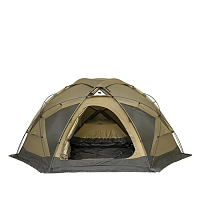When it comes to outdoor camping, knowing how to tie essential knots is a valuable skill that every camper should possess. The right knots can make a significant difference in various camping activities, including setting up tents, securing tarps, hanging hammocks, and creating makeshift clotheslines. In this comprehensive guide, we will explore some of the most important camping knots you should know. From basic knots to more advanced ones, we will provide step-by-step instructions, tips, and practical applications for each knot. So, let's dive into the world of camping knots and enhance your outdoor skills!
1. The Clove Hitch Knot
The Clove Hitch knot is a versatile knot that is commonly used for securing tent guylines, tying tarps, or creating a temporary anchor point. Here's how to tie the Clove Hitch knot:
1. Start by forming a loop with the working end of the rope.
2. Pass the working end over the standing part of the rope.
3. Bring the working end under the standing part and through the loop you created in step 1.
4. Tighten the knot by pulling both ends of the rope.
Practical Application: Use the Clove Hitch knot to secure your tent guylines to stakes or to tie down a tarp for shelter.
2. The Bowline Knot
The Bowline knot is known for its strength and reliability. It creates a secure loop that is easy to tie and untie, even after being subjected to heavy loads. Here's how to tie the Bowline knot:
1. Form a small loop near the end of the rope, leaving enough length for the desired loop size.
2. Pass the working end of the rope through the loop from the underneath.
3. Wrap the working end around the standing part of the rope.
4. Pass the working end back through the loop.
5. Tighten the knot by pulling the standing part of the rope while holding the working end.
Practical Application: Use the Bowline knot to create a loop at the end of a rope for securing gear, attaching a hammock to a tree, or hanging a bear bag for food storage.
3. The Taut-Line Hitch Knot
The Taut-Line Hitch knot, also known as the Adjustable Hitch, is ideal for securing tent guylines or adjusting the tension of a line. It can be easily adjusted and holds well under tension. Here's how to tie the Taut-Line Hitch knot:
1. Make a loop around a fixed object, such as a stake or a tree.
2. Pass the working end of the rope through the loop from the underneath.
3. Wrap the working end around the standing part of the rope.
4. Pass the working end through the loop again, this time from the top.
5. Tighten the knot by pulling the working end while holding the standing part.
Practical Application: Use the Taut-Line Hitch knot to secure tent guylines and easily adjust the tension to accommodate changes in weather conditions.
At POMOLY Find the Best Camping Gear for You
4. The Figure Eight Knot
The Figure Eight knot is a basic knot used to create a stopper knot at the end of a rope. It prevents the rope from slipping through loops or other knots. Here's how to tie the Figure Eight knot:
1. Form a loop near the end of the rope, crossing the working end over the standing part.
2. Pass the working end behind the standing part and bring it up through the loop.
3. Continue passing the working end over and behind the standing part, creating an "8" shape.
4. Pass the working end through the loop once more.
5. Tighten the knot by pulling both ends of the rope.
Practical Application: Use the Figure Eight knot to create stopper knots at the end of ropes, preventing them from slipping through grommets or other knots.
5. The Prusik Knot
The Prusik knot is a friction knot that allows you to create a loop that can grip tightly onto another rope. It is commonly used for ascending or descending ropes, creating adjustable loops, or securing gear. Here's how to tie the Prusik knot:
1. Form a loop with a smaller diameter rope or cord.
2. Wrap the looped rope around a larger diameter rope or cord, with the working end passing over the standing part.
3. Pass the working end through the loop you created in step 1.
4. Tighten the knot by pulling the standing part of the looped rope while holding the working end.
Practical Application: Use the Prusik knot to ascend or descend ropes during climbing or as an adjustable loop for securing gear.
Conclusion
Mastering essential camping knots is a valuable skill that will enhance your outdoor experiences and make your camping trips more enjoyable and efficient. The knots mentioned in this guide, including the Clove Hitch, Bowline, Taut-Line Hitch, Figure Eight, and Prusik knots, are fundamental knots that every camper should know. Practice tying these knots until they become second natureto you. Remember, repetition is key to mastery. By having these knots in your repertoire, you'll be equipped to handle various camping situations, from securing tents and tarps to hanging hammocks and adjusting tension.
Take the time to familiarize yourself with each knot's steps and practice them before your next camping trip. Consider using different types of ropes or cords to get a feel for how each knot behaves with different materials. Additionally, understanding the practical applications of each knot will help you make the most out of your camping experience.
Remember, safety should always be a priority when using knots. Ensure that each knot is properly tied and secure before putting any weight or tension on it. Regularly inspect your knots throughout your camping trip to ensure they remain tight and secure.
By mastering these essential camping knots, you'll gain confidence in your outdoor skills and be better prepared for any camping adventure that comes your way. So, grab your ropes, practice those knots, and get ready to elevate your camping experience with the power of knot-tying expertise. Happy camping!








